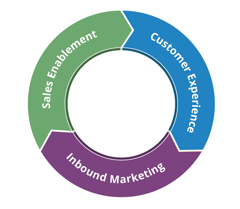Measuring success is as important as executing marketing strategies in today's fast-paced digital landscape. Without clear performance indicators, tracking progress, optimizing campaigns, or proving ROI is nearly impossible. That’s where Key Performance Indicators (KPIs) come into play. KPIs serve as the guiding metrics that help marketers assess the effectiveness of their digital marketing programs. Whether you’re focused on increasing website traffic, improving conversion rates, or enhancing customer engagement, tracking the right KPIs ensures that your strategies align with your business goals.
In this blog, we’ll share 10 essential KPIs you should include in your digital marketing programs. These metrics will help you make data-driven decisions, refine your campaigns, and achieve sustainable growth.
- Focus on Customer Lifetime Value
- Track Engagement Beyond Clicks
- Combine CLV with Attribution
- Measure Long-Term Revenue Impact
- Optimize for Profit Per Visitor
- Focus on Meaningful Engagement Metrics
- Use Multi-Touch Attribution Models
- Analyze User Interaction Quality
- Conversion Rate per Channel Helps to Better Allocate Resources
- Track Customer Journey Velocity
Focus on Customer Lifetime Value
Here's a tip that's worked wonders for us: stop obsessing over vanity metrics and start thinking about how your customers behave over time. Let's say you run a coffee shop. Sure, tracking daily sales matters, but what if you also knew which customers come back every week for years? That's the magic of Customer Lifetime Value (CLV). It's not just about today's latte, it's about predicting who'll become your loyal "double-shot oat-milk regular." Once you spot those folks, you can invest more in the channels that attract them, even if they don't look flashy at first glance.
Now, let's talk engagement. Imagine throwing a party where everyone shows up but leaves after five minutes. That's what happens when you focus on clicks alone. Instead, pay attention to who lingers, the people reading your blog top to bottom, replaying your demo video, or sharing your posts with a friend. Tools like heat maps or session recordings act like a hidden camera, showing where people get stuck or light up. If your "About Us" page has a 90% bounce rate, maybe it's time to rewrite that cringy mission statement from 2018.
Here's the kicker: Combine CLV with attribution. If Instagram Reels bring in one-time buyers but your podcast listeners become die-hard fans, shift your budget, even if it means fewer "quick wins." And keep it real: Test, tweak, and talk to your team over pizza. Metrics shouldn't feel like homework.
Jose Fuente, Marketing Lead, SYMVOLT
Track Engagement Beyond Clicks
I used to view digital marketing success through the lens of immediate results—click-through rates, impressions, traffic spikes. But over time, I realized the real value lies in understanding what happens after that click. One pivotal moment came when analyzing repeat purchase behavior.
I noticed a customer who had made three purchases over six months contributed significantly more revenue than several one-time buyers combined. That insight pushed me to track customer lifetime value (CLV) as a core KPI, helping me identify high-value segments and optimize campaigns accordingly. To calculate CLV effectively, I gathered data on average purchase value, frequency of purchases, and the projected retention rate for different customer segments. For example, early-season buyers consistently showed higher long-term engagement, so I adjusted my acquisition efforts to target them with personalized offers and follow-up campaigns. By focusing on CLV, I prioritized strategies that nurtured repeat customers rather than chasing low-cost, short-term leads.
I implemented multi-touch models for conversion attribution to understand which channels were influencing conversions at each stage. After tracking touchpoints, I discovered that while social ads initiated customer interest, my email campaigns often closed the conversion. This allowed me to allocate resources more effectively and optimize content for each platform's role in the funnel. My advice is to layer surface metrics with deep KPIs like CLV and attribution models—this creates a clearer picture of which strategies truly drive sustainable growth over time.
Erin Siemek, CEO, Forge Digital Marketing, LLC
Combine CLV with Attribution
Our digital marketing program emphasizes measuring the Return on Marketing Investment (ROMI) by integrating data analytics and market research. One practical approach is through patient lifetime value, as it allows us to assess long-term revenue potential from individual customer relationships. For instance, by evaluating patient acquisition data linked with demographics and behaviors, we can tailor strategies that improve both immediate conversions and long-term engagements.
Another KPI we focus on is engagement across multiple channels, especially in health-tech, where cross-channel communication is crucial. We track user interactions via analytics tools and feedback mechanisms, continuously refining content to improve experience and reach. This dedication to optimizing customer satisfaction ensures our campaigns are strategically aligned to the audience's interests, as seen with our initiatives in expanding local SEO to target regional client bases effectively.
We also employ advanced conversion attribution models to optimize budget allocations. Using channel-specific cost analyses and conversion metrics, we can identify the most effective platforms and refine our strategies for each. This approach notably helped a healthtech client scale their patient acquisition by 20%, allowing us to reinvest in high-yield channels and improve overall campaign performance.
Shree Goldman, Head of Digital Marketing, Clyck
Measure Long-Term Revenue Impact
A high-performing digital marketing program requires focusing on deeper, strategic KPIs beyond surface-level metrics like clicks and impressions. Here's how I approach it:
Customer Lifetime Value (CLV): Measuring True ROI - CLV is a critical metric because it shifts the focus from short-term conversions to long-term revenue impact. To optimize CLV, I analyze:
- Acquisition cost vs. lifetime value ratio - Ensuring marketing spend is aligned with customer profitability.
- Retention & churn rates - AI-driven predictive modeling helps identify at-risk customers before they churn.
- Segmentation by CLV - High-value customers often engage differently; tailoring messaging to them enhances long-term value.
Engagement Quality: Moving Beyond Vanity Metrics - Rather than just measuring likes or shares, I assess:
- Dwell time & content consumption patterns - How long users engage with specific content, using AI to optimize future interactions.
- Conversational AI insights - Chatbots and AI-driven sentiment analysis reveal customer intent and pain points.
- Cross-platform behavioral tracking - Analyzing engagement across LinkedIn, email, and website interactions provides a full-funnel view.
Conversion Attribution: Identifying the True Drivers of Success - A robust multi-touch attribution model ensures we accurately credit the channels and interactions that lead to conversions. I emphasize:
- AI-powered attribution modeling - Machine learning identifies which touchpoints (organic, paid, social, referrals) contribute most to conversions.
- Blockchain-based attribution tracking - Enhances transparency in ad spend allocation and reduces fraud in programmatic advertising.
- Incrementality testing - A/B tests determine the real impact of each marketing channel on conversions, avoiding misleading correlation-based assumptions.
By integrating AI and blockchain into these measurements, we enhance accuracy and uncover deep insights that drive scalable, data-backed marketing strategies. Let's optimize for impact, not just activity.
Zeev Wexler, CEO, Wexler Marketing
Optimize for Profit Per Visitor
One of the most valuable but often underutilized KPIs in digital marketing is profit per visitor (PPV) rather than just focusing on conversion rate or cost per acquisition. Many marketers optimize for surface-level metrics like clicks and conversions, which don't always reflect actual business impact. Profit per visitor considers whether someone converts and how much revenue and margin they generate, making it a far more actionable metric.
For example, two campaigns might have the same conversion rate, but if one attracts higher-value customers who generate repeat purchases, that campaign is far more effective in the long run. When tracking CLV, it's critical to segment by customer cohorts to understand which marketing efforts bring in high-value buyers versus one-time purchasers. Optimizing for engagement quality also requires moving beyond vanity metrics like likes and focusing on meaningful actions—time spent on site, content interactions that correlate with conversions, and repeat visits.
For conversion attribution, a more profound approach is shifting from last-click models to incrementality testing to measure the true impact of each marketing channel. Instead of assuming every conversion should be credited to the last touchpoint, incremental testing helps determine which channels drive additional revenue that wouldn't have occurred otherwise. Many businesses overestimate the impact of specific channels simply because they appear in the customer journey, when in reality, another touchpoint may have been the true driver of conversion. By integrating these deeper KPIs into marketing analysis, brands can optimize for long-term profitability rather than just immediate conversions, ensuring that every marketing dollar is spent on strategies that drive real business value.
Eugene Mischenko, President, E-Commerce & Digital Marketing Association
Focus on Meaningful Engagement Metrics
While metrics like page views, likes, and followers are easy to track, they don't necessarily reflect genuine engagement. Focus on metrics that indicate how deeply users interact with your content and brand. Here's how to implement:
Time on Page & Duration:
- This measures how long users spend on your website or specific pages.
- A longer duration generally indicates that users find your content valuable and engaging.
- Segment this data by traffic source and content type to identify high-performing areas.
Scroll Depth:
- Tools like Google Analytics or heat mapping software can track how far users scroll down your pages.
- This provides insights into whether users read your content thoroughly or skim.
- If users consistently drop off before reaching critical information, you may need to adjust your content or layout.
Interactive Elements:
- Track user interactions with specific elements on your website, such as:
- Video plays and completion rates.
- Form submissions
- Use of interactive tools or calculators.
- These actions indicate active engagement and a higher level of interest.
Analyzing Non-Branded Keyword Performance:
- Non-branded keywords indicate how well your content ranks for general search queries, independent of your brand recognition.
- This reflects your authority and relevance in your industry.
- How to Analyze:
- Filter your keyword tracking data to isolate non-branded terms.
- Analyze the search volume and competition for these keywords.
- Identify keywords with significant ranking improvements or declines.
Return Visits and Frequency:
- Measure how often users return to your website and how frequently they engage with your content.
- This indicates sustained interest and brand loyalty.
- Combine this with the previously mentioned metrics to see what content brings people back.
Why it Matters:
- Better Content Optimization: Understanding what content resonates with your audience allows you to create more engaging and compelling content.
- Improved User Experience: By identifying areas where users are dropping off or struggling, you can improve the user experience and increase conversions.
- More Accurate ROI Measurement: Meaningful engagement metrics provide a more accurate picture of the effectiveness of your marketing efforts.
By focusing on engagement quality, you can better understand your audience and optimize your digital marketing program for long-term success.
Arjunsinh Chandravat, Director of SEO, Whirlwind
Use Multi-Touch Attribution Models
Conversion attribution is probably one of the hardest things to track in marketing, but it's also one of the most important. I use WhatConverts (not affiliated) because it helps me see exactly where leads are coming from: Reddit, Facebook, Google Ads, SEO, or even Bing. It also gives a breakdown of first touch, last touch, and data-driven attribution, so I can tell which channels bring in revenue each quarter. Without that, it's just guessing what's working, and that's where many marketing teams go wrong. For CLV, we mostly rely on Stripe. But it's tough because you don't know CLV until the money is in the bank, and even then, it's not 100% accurate.
Stripe helps us track recurring purchases, churn, and drop-offs, which gives us a rough idea of long-term revenue. If you're running a subscription or invoice model, having a way to measure repeat purchases and customer retention is key, but there's no perfect tool that does it all. You just have to keep an eye on patterns and make adjustments as you go.
Josiah Roche, Fractional CMO, JRR Marketing
Analyze User Interaction Quality
One of the most valuable deeper KPIs we measure is engagement quality—not just how many people visit a page but how they interact with it. For instance, using heatmaps and session recordings, we analyze where users hesitate, where they drop off, and whether they engage with key elements like CTAs. This approach helped us optimize a fashion e-commerce client's checkout flow, leading to a 53% increase in conversions by refining navigation and reducing friction points. Rather than focusing solely on surface metrics like traffic or bounce rates, tracking engagement quality gives a clearer picture of how to improve the user journey and drive meaningful conversions.
Gursharan Singh, Co-Founder, WebSpero Solutions
Conversion Rate per Channel Helps to Better Allocate Resources
By tracking conversion rates across different marketing channels such as social media, email, and paid advertising, you can identify which channels are most effective in driving conversions and allocate your resources accordingly.
This KPI is essential for our business because it helps us:
-
Optimize Marketing Spend: Knowing which channels (e.g., organic search, paid ads, social media, email) generate the highest conversion rates helps allocate budget effectively to maximize ROI.
-
Improve Customer Targeting: Different channels attract different audience segments. Analyzing conversion rates per channel allows businesses to refine messaging and targeting strategies.
-
Identify High-Performing vs. Underperforming Channels: If a particular channel has a low conversion rate, it may need adjustments in strategy, landing page optimization, or better audience targeting.
-
Enhance Customer Experience: Some channels may drive more qualified leads, while others bring in visitors who drop off quickly. Understanding this helps in improving the user journey and experience.
-
Measure Campaign Effectiveness: If a business runs multiple campaigns across different platforms, tracking conversion rates per channel helps gauge which campaigns work best.
-
Support Data-Driven Decisions: Instead of making marketing decisions based on assumptions, businesses can use conversion rate insights to drive strategic actions.
Rich Meyer, VP of Marketing, Prism Global Marketing Solutions
Track Customer Journey Velocity
Customer journey velocity tracks how quickly prospects move through your marketing funnel and, more importantly, where they get stuck. We gain actionable intelligence about friction points in our marketing by measuring the average time spent at each stage and identifying where prospects linger or drop off.
For example, we discovered that a client's prospects spent an average of 12 days in the consideration phase before converting. By implementing targeted content and personalized follow-up sequences for prospects who remained in this stage beyond 5 days, we reduced the average consideration time to 7 days and increased conversion rates by 23%.
This velocity metric complements CLV beautifully because it helps identify which acquisition channels produce customers who convert faster and remain loyal longer. We've found that channels generating quicker conversions don't always yield higher lifetime value customers—sometimes the opposite is true.
For attribution, we've moved beyond simple first/last touch models to implement position-based attribution that gives appropriate weight to touchpoints throughout the customer journey. This provides a more accurate picture of which content and channels truly influence conversions.
The key is connecting these deeper metrics to specific actions your team can take. Sophisticated KPIs are valuable only when they lead to concrete optimizations in your marketing approach.
Harmanjit Singh, Founder & CEO, Website Design Brampton
Tracking the right Key Performance Indicators (KPIs) is essential for measuring the success of your digital marketing efforts. By focusing on metrics like website traffic, conversion rates, customer acquisition costs, and engagement rates, you can gain valuable insights into what’s working and what needs improvement.
A well-structured KPI strategy helps businesses make data-driven decisions, optimize campaigns, and maximize return on investment. Whether you’re analyzing SEO performance, social media growth, or email marketing effectiveness, continuously monitoring these metrics will empower you to refine your digital marketing strategy and stay ahead of the competition. Prioritize the KPIs that align with your business goals, adapt your strategies based on data, and watch your digital marketing program thrive!
If you're interested in discussing ways better to measure the success of your digital marketing programs, we invite you to schedule an inbound marketing consultation with our team.


.png?width=80&height=80&name=diamond-badge-color%20(1).png)
__Square.png?width=250&height=250&name=Marketing_Hub_(1)__Square.png)




.png?width=250&name=diamond-badge-color%20(1).png)
